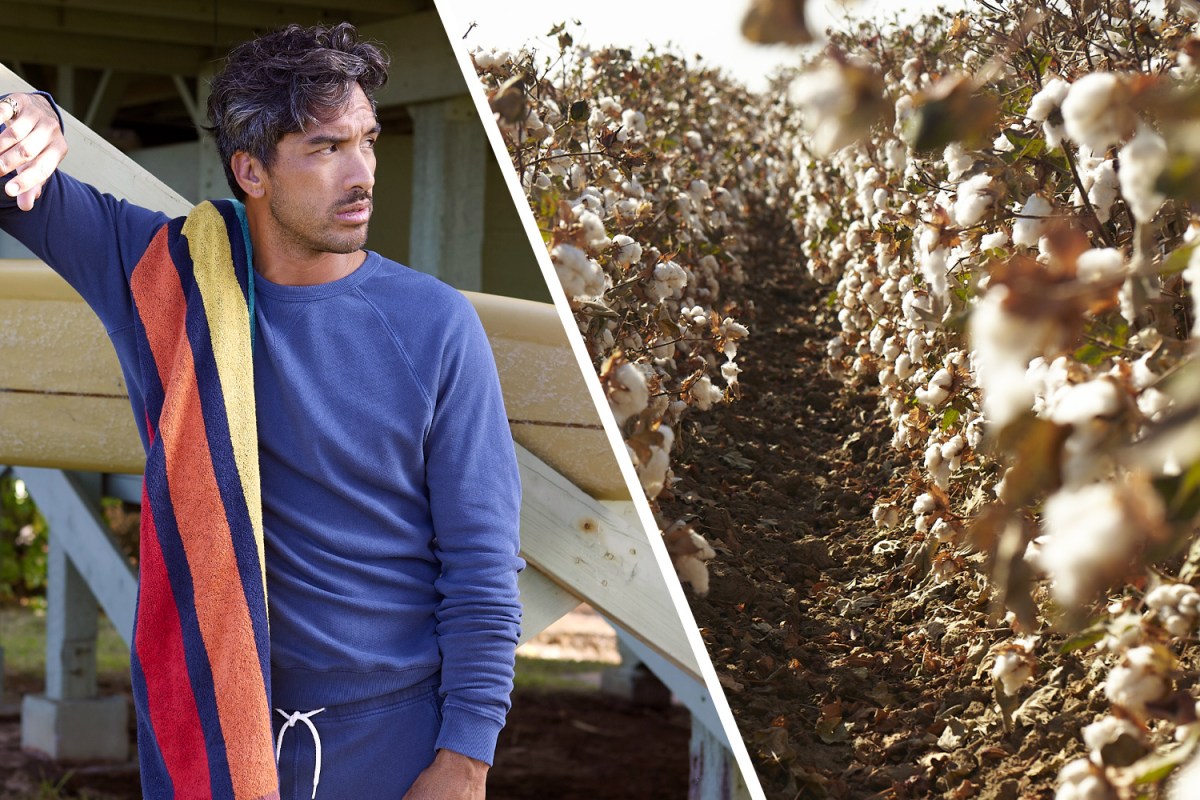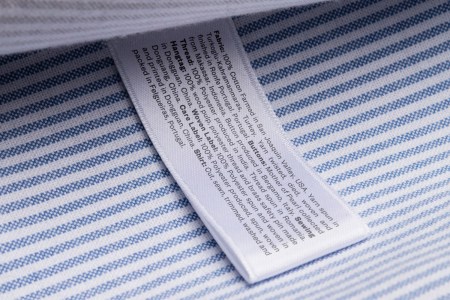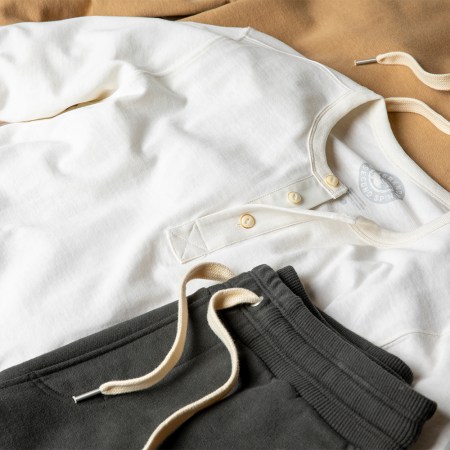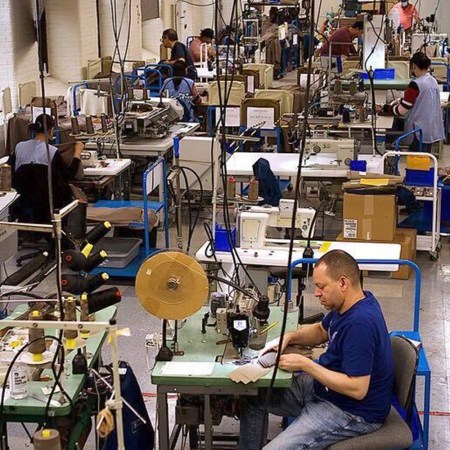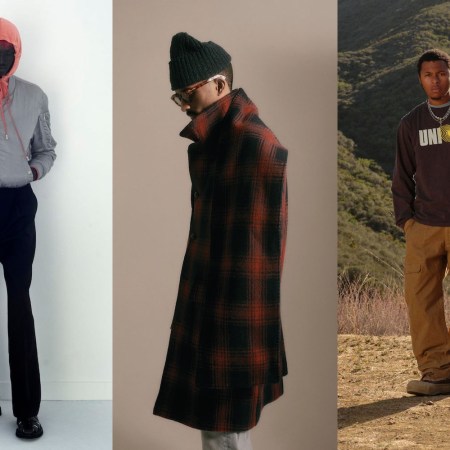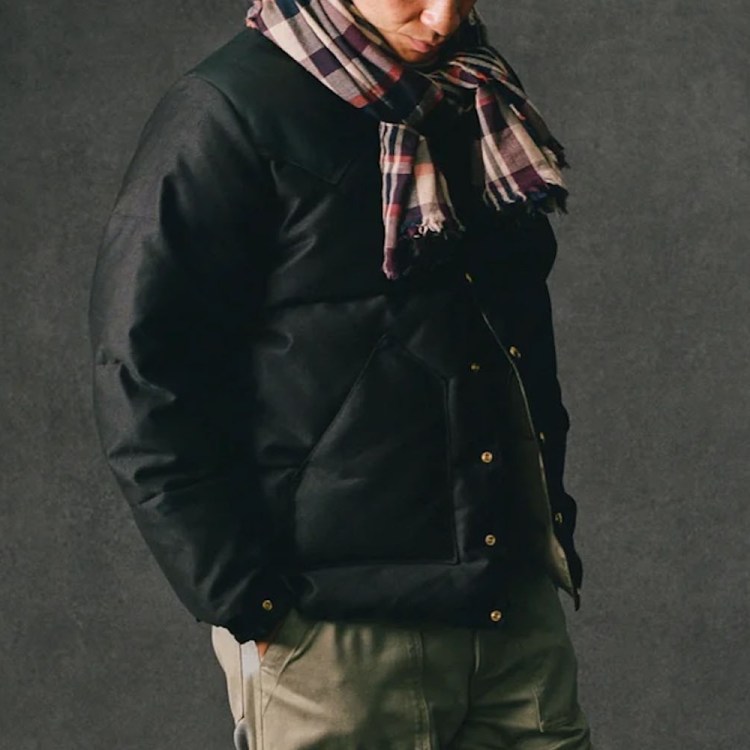When Dylon Shepelsky joined apparel brand Outerknown in 2021, the brand was deep in work around its supply chain. This type of work wasn’t necessarily new for the California-based company, which is widely considered a leader in industry responsibility and transparency. What was novel was the research into creating a fully-traceable line of products that could be followed from the moment a cotton seed was planted to the final sale to the consumer, all within American borders — a rare concept in an industry where the norm is overseas production followed by global shipping, with myriad underlying environmental and social issues.
It’s what makes the brand’s California Series such a unique prospect. Launching June 1, Outerknown will release a five-piece collection of sweatshirts, sweatshorts and a hoodie, all made from cotton entirely grown and processed in the United States, primarily in the Golden State as the name suggests. The cotton comes from two farms in the central part of the state, is ginned (separating fiber and seed) nearby, and milled, cut and sewn in Los Angeles. The only part of the process that takes place elsewhere is the yarn spinning as no scalable spinners operate there (instead, the cotton is spun in North Carolina).
“It started as a tee program, but we didn’t feel like it was right, as we wanted to do something cozier and year-round,” Shepelsky tells InsideHook.
Can You Make Menswear That Does No Harm? We Asked the Guy Trying.
Asket co-founder Jakob Dworsky talks about the problem with “sustainability,” recycled plastic fabrics and shopping our way out of problemsShepelsky, who is leading the work around this release, along with a variety of other material initiatives at Outerknown, says that what made the most sense for the company was to work towards a three-thread terry and a heavier-weight cotton — what we know as common sweatshirt and sweatpant-type material.
When these go up for sale, the prices will range from $198 for the hoodie to $98 for the shorts. This is in line with Outerknown product pricing for other lines with different manufacturing processes, but it’s considerably higher for staple garments that typically cost much less. Most people are probably thinking, $200 for a hoodie? But it’s what each thread within the hoodie stands for that’s an example of progressive thinking around how the commercial apparel business creates its products.

The Story Behind Outerknown’s Cotton
To understand the significance of Outerknown’s California Series, it helps to have a bit of background.
Outerknown had done a small prior collection of two pieces of clothing made from alpaca and wool in the U.S. with a certain level of transparency labeled “Climate Beneficial,” which came from a much more collaborative effort between several responsibility-focused brands looking for ways to decrease the product’s environmental impact.
Climate Beneficial began as a project from the nonprofit Fibershed, highlighting certain fibers (primarily wool, cotton and hemp) that were coming from farms utilizing the least invasive and most “natural” farming techniques possible, essentially following the modern idea of “regenerative farming.”
While “regeneration” is a popular word these days, but with no real regulation, the Climate Beneficial program is clearly doing good, transparent work in showing the potential of what regeneratively-farmed cotton could be through a fully verified supply chain.
The response and results from this small collection led Outerknown down a path of more intensive research around what it would take to produce a larger (yet still ultimately small, in comparison to big brands like H&M or J.Crew) line of products coming from a U.S.-based supply chain from farm to the shelf. This work led to the formation of the California Cotton & Climate Coalition (C4), which formalized the idea of creating an ongoing series of garments that could bear the Climate Beneficial label.
“C4’s work was meant to pair the forces and the market, highlighting the San Joaquin Valley — a $50 billion agricultural center,” says Fibershed Executive Director Rebecca Burgess.
C4 was founded as a partnership between Fibershed and a few other like-minded groups to work towards long-term solutions to repair the health of the soil in farming areas of Central California. The coalition is also working to modernize rural jobs through the uncertainties of climate change, and essentially build the future of how farmers get their cotton to brands. Besides Outerknown, companies including Reformation and Coyuchi are founding members, and Carhartt bought a portion of C4’s 2022 cotton harvest to use in future workwear lines.
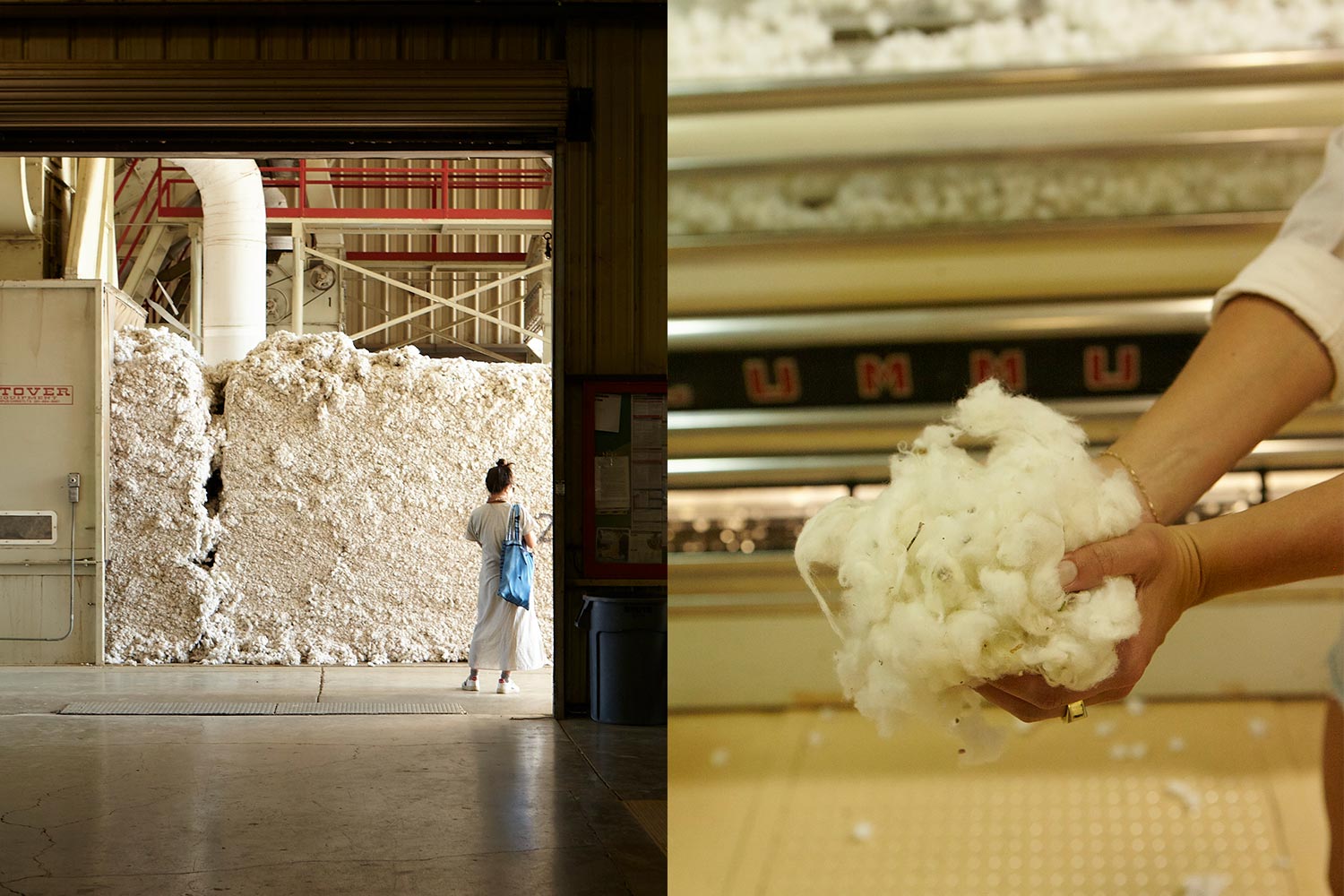
Do You Know Where Your Clothing Comes From?
Apparel production requires a lot of energy and a lot of resources. It ranks as a top global polluter in a number of categories, and cotton on its own is problematic, especially in the developing world where most of the raw material that makes it into our clothes comes from.
Investing in research and development of better, closer-to-home cotton production not only aims to reduce the environmental impact of the physical product, but challenges everyone involved in the avenues that get a piece of clothing to market to create it in a way that’s better for the planet.
In terms of C4’s farming and cotton production work and advocacy, what’s clear is this: Science proves that regenerative agriculture creates a positive environmental impact, most notably when it comes to soil health. Responsibly-farmed cotton reintroduces vital nutrients into the soil, making for a hardier and stronger cotton harvest in the future. Working with Fibershed, the team at Outerknown is monitoring the soil that grew the California Series cotton through seven different health markers. Coyuchi COO Marcus Chung adds that in reviews of preliminary data from C4, the process is already making a positive difference.
“We hope to see more and more of this cotton being grown in California,” he says.
There’s also the secondary social piece of how this creates viable longevity for rural farming jobs at a time of climate uncertainty. When brands like Outerknown, Reformation and Coyuchi invest in all of this, it’s perhaps one of the most tangible examples of “sustainability,” connecting this type of agricultural work to thriving livelihoods, and ultimately, the consumer.
On the business side, it makes a big impact for a company like San Francisco-based Coyuchi, and their design director Whitney Thornburg, who can drive just a couple of hours and stand in the very fields of cotton she’ll be using down the line.
“Having that connection is a unique experience, but It probably shouldn’t be,” she says.
Her experience is a rare one since most designers don’t work anywhere near where the raw product is physically grown. The absence of this essential link underscores how important C4’s work is, and ultimately, getting a collection like the California Series in the world. If consumers can understand the value and importance of these products, their demand will drive further investment in more responsible cotton production.
“Our cotton systems need restructuring, and we can use the market to drive the conversation,” Burgess says.
To get something like the California Series out in the world requires significant investment and collaboration from not just Outerknown, but all of the C4 partner brands. Burgess says the initial group of brand partners were ultimately surprised by the cost of the work, but they almost surely understand its importance.
“I think the process helped everyone gain insight on what the cotton purchasing infrastructure looks like,” Outerknown’s Shepelsky says. “We were so used to relying on certain suppliers, and this opened up a new scope that allowed us to work more closely with certain farmers and on other projects as well.”
Soon, you’ll be able to gain your own insight on what a better, more responsible cotton sweatshirt looks and feels like. We’ll take the natural color.
This article appeared in an InsideHook newsletter. Sign up for free to get more on travel, wellness, style, drinking, and culture.
